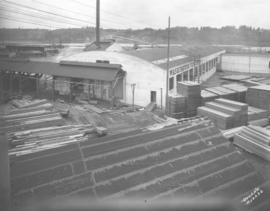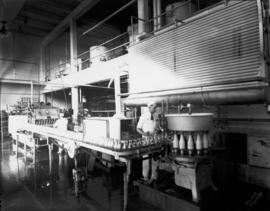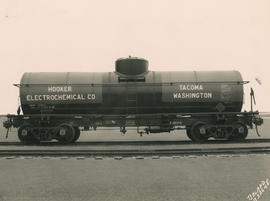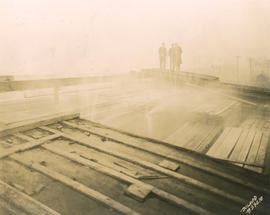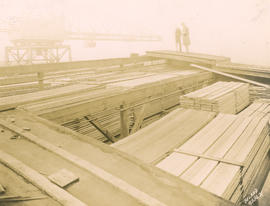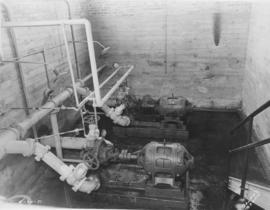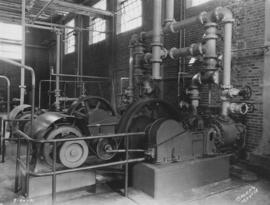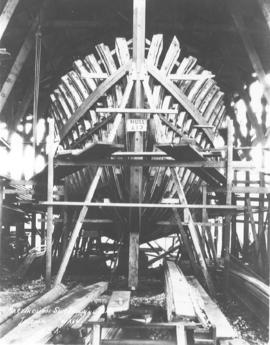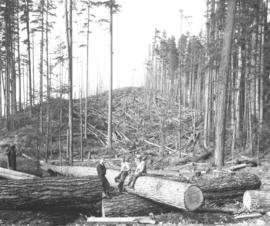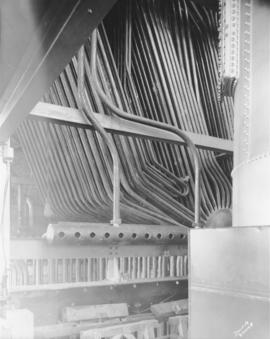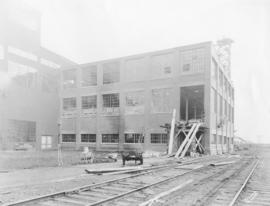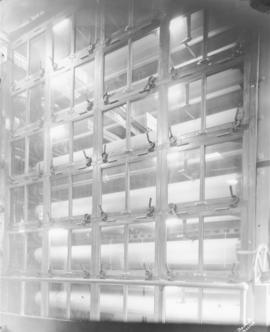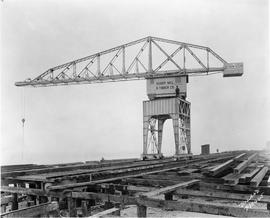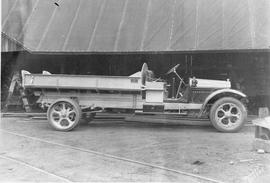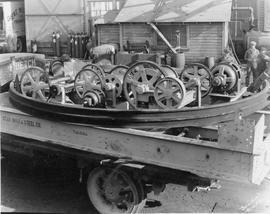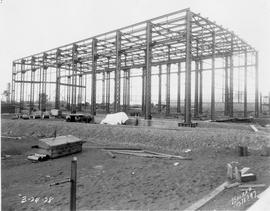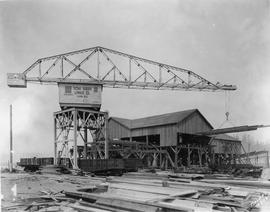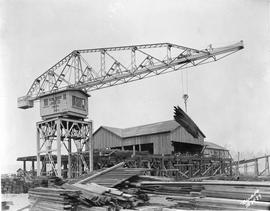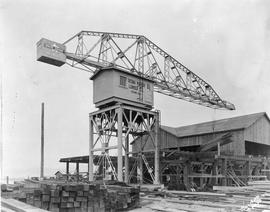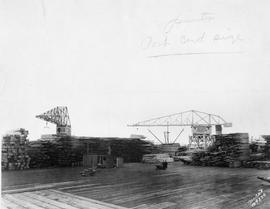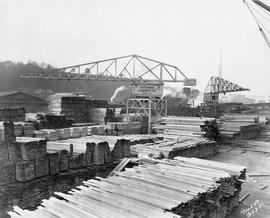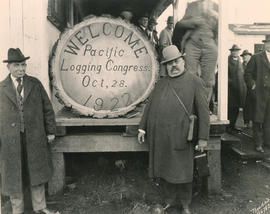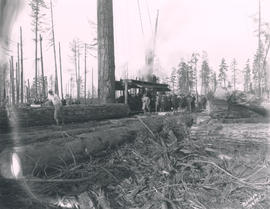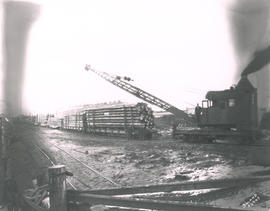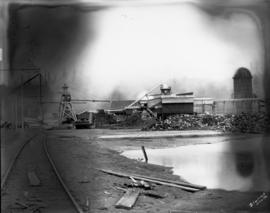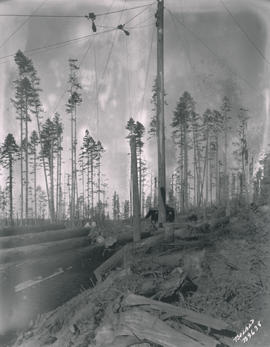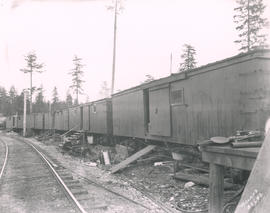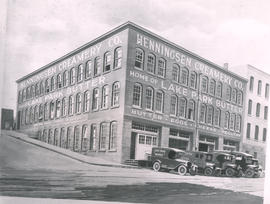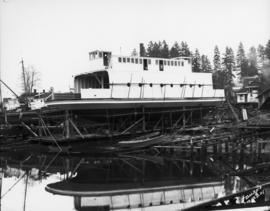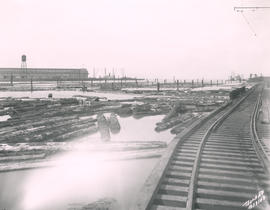- Item
- 1925-04
Part of Marvin Boland Photographs
This was the Olympia plant of Washington Veneer Co., as pictured in April of 1925. The plywood company was less than a year old at the time, having been incorporated in June of 1924. It was located on land leased from the Port of Olympia, about 3/4th of a mile from Olympia's business center, and conveniently located near water and rail transportation. Already on site was a sawmill and retail lumber yard, both to be operated for many years by Washington Veneer. Plywood production began in February of 1925 at a rate of 65,000 feet daily. Among other innovations, manager Ed Westman installed the first belt-free lathe on the Pacific Coast. Marketing of Washington Veneer's panel production was handled primarily through the Wheeler-Osgood Company of Tacoma. A second plywood plant, called Capitol Plywood Co., was built about 1/4th mile from the site of the original plant in 1929. Washington Veneer was acquired several times and finally closed down in the late 1960s. (www.apawood.org) G73.1-011
Washington Veneer Co. (Olympia); Lumber industry--Olympia--1920-1930;
